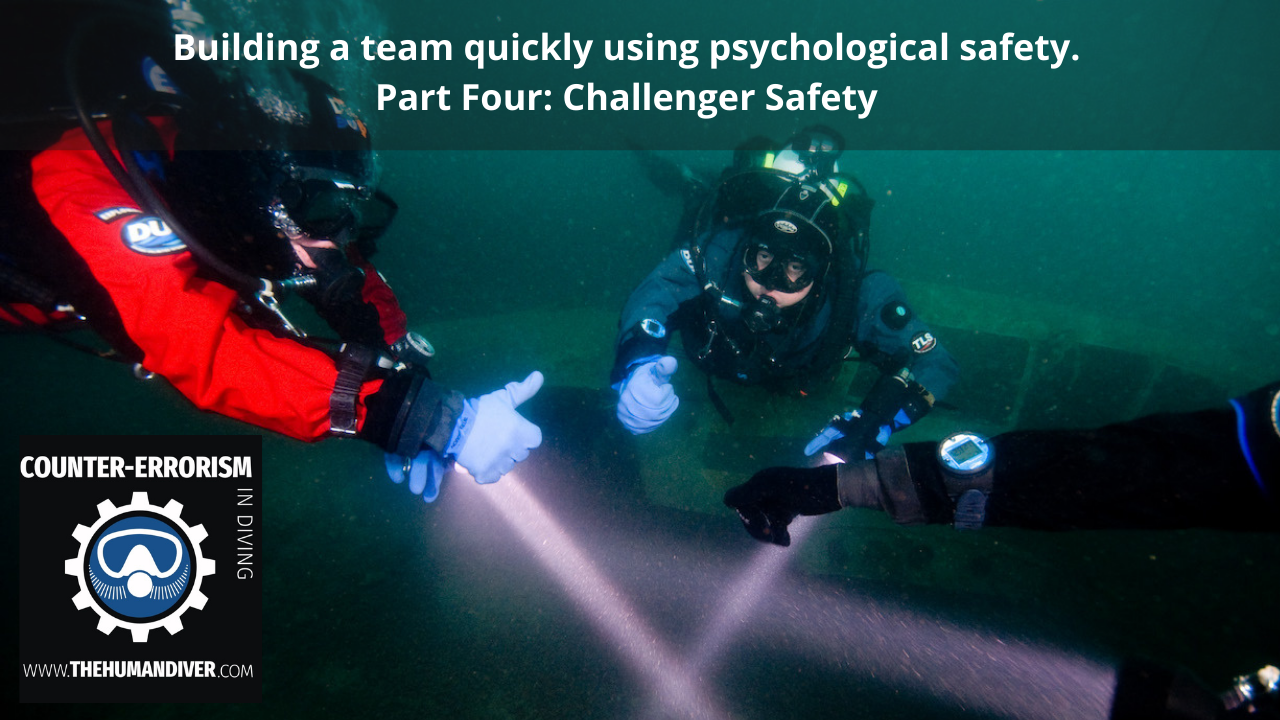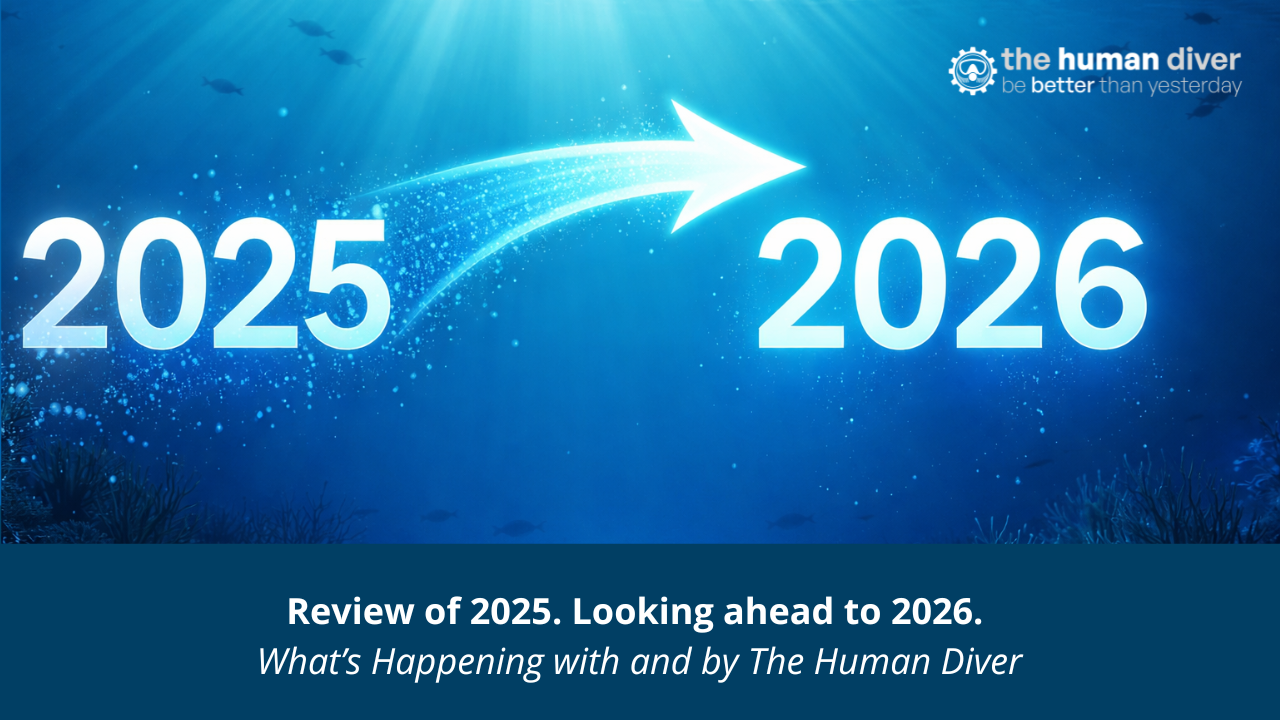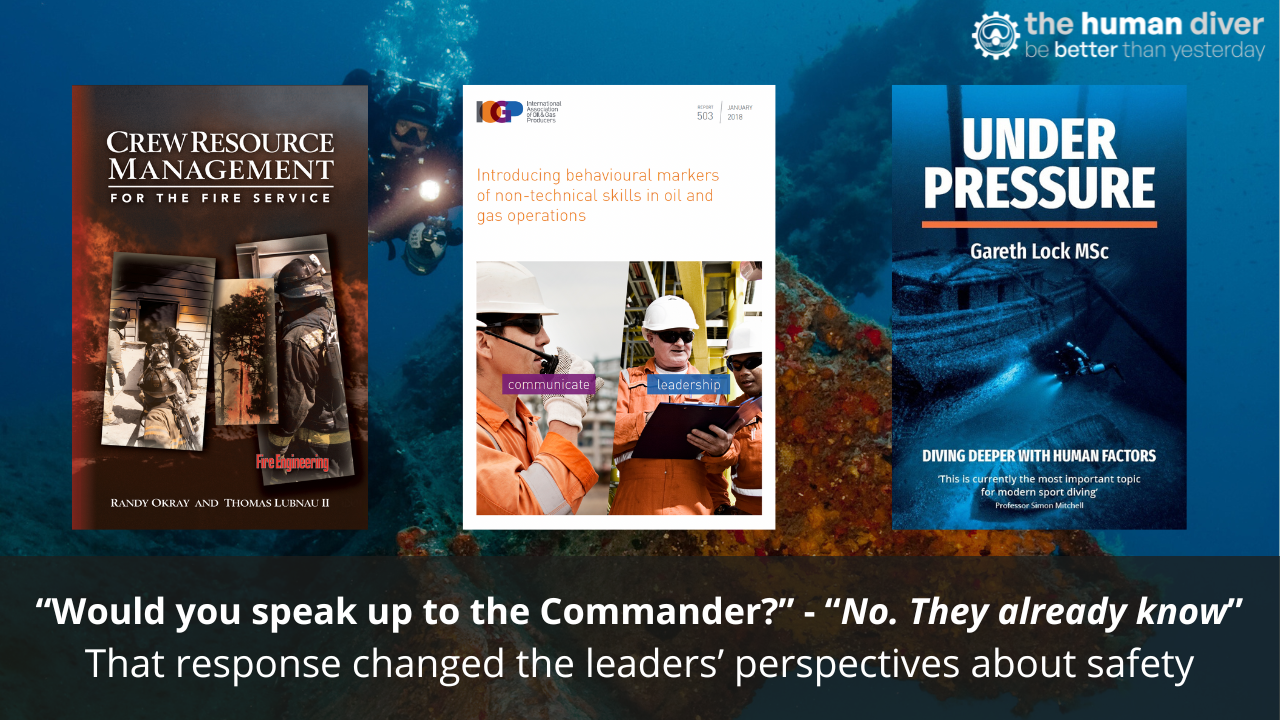
Building a team quickly #4: Challenger Safety
Jan 14, 2021How do you make others feel safe enough to challenge the status quo, innovate, and make things better?
This is the fourth and final part in a series of blogs which looks at building psychological safety within your instructional setting or ‘fun’ diving environments. The previous three blogs are linked below
Part One: Inclusion Safety
Part Three: Contributor Safety
Part Four: Challenger Safety (this article)

Anyone can thumb a dive at any time for any reasons, and that includes being on the surface. This is something taught to most divers because there shouldn’t be anything that keeps you underwater if you don’t want to be there. Unfortunately, this isn’t easy in some cases because there isn’t a psychologically safe environment. In May 2020, the documentary ‘If Only…’ was released which told the tragic story of Brian Bugge who died two years previously. The causal and contributory factors were multiple, and the lack of a safe environment was a key one. Not just because of the internally generated pressures to complete the course, but also because team members were unable to challenge what was happening at the time when they could see things weren’t happening as they should do.
The goal of having challenger safety is to enable team members to question or challenge others about potentially unsafe practices or concerns. This also includes your instructor. Authority gradient is a known problem, especially in high-risk industries, where the most senior or experienced person can influence the behaviours of others, and significant effort is done to reduce this. In diver training, this important topic is hardly touched upon. Read on to find five ways in which you can improve challenger safety within your team or class.

Respond constructively to disruptive ideas and bad news.
While it is nice to have a calm environment where everyone is following the same plan, sometimes disruption is needed to improve things. Your positive emotional response to disruptive ideas and bad news is a clear signal that you have a high tolerance for candour and will protect your team in their right to dissent. Note that the sort of dissent we want is to challenge and be constructive, with the motivation being towards improvement rather than destruction. For example, students asking the ‘why do we do it this way?’ question should be met with rationale and logical responses, not ‘because we’ve always done it this way’. If you don’t know the answer, you can respond with ‘I don’t know, but I’ll find out…’ (learner safety).
Create diverse teams.
Assign diverse people with diverse perspectives to work together on assigned projects. Diverse teams possess cognitive diversity and naturally produce divergent thinking. In a class setting, this might be a little more difficult to achieve but if you are in a project or expedition setting, you can do this relatively easily as the expertise that is needed can be brought to bear. One way that this can be executed in a teaching environment is to invite trainee instructors or interns onto your class to see how you teach and question and challenge you. You can also learn from them as they might see things you haven’t seen before.

Challenge your own decisions. Leaders make decisions that are right today and then wrong tomorrow. At other times, we simply make the wrong decisions, period. Unfortunately, changed decisions are often seen as a sign of weakness, whereas if you openly question and discuss some of your previous decisions you can demonstrate that even correct decisions aren’t correct forever. Help your team know that are willing to revisit old decisions, courses of action, and points of view. However, you need to explain the rationale why the change has happened and not just ‘because we’ve changed now’ which is no better than ‘we’ve always done it that way’. Unfortunately, the diving world is full of situations where people have gone back on previous decisions and then are criticised for doing this.
Protect your team from groupthink.
When team members start to think alike, we call that groupthink. It’s dangerous to create an environment that can limit innovation. This is especially true when it comes to risky or dangerous behaviours like penetrating a cave or wreck without a line, exceeding decompression obligations, dodgy weather conditions, or any manner of activities which, if something were to happen, others would apply hindsight and say, “that was obvious”. ‘If Only…’ has a number of examples of groupthink. As humans, we are social creatures, and as such, team members sometimes become more concerned about fitting in with the conventional thinking of the group instead of applying critical thinking. As a leader or instructor get into the habit of asking your team to disagree with you. Say, “I don’t want an echo chamber. What’s another way to think about this?”

Follow the disruption question sequence.
If you are a leader or instructor and want to increase the ability of your team or students to challenge the status quo, you can use the disruption question sequence. Begin with a “why?” question: Why do we do it this way? Move to a “what if?” question: What if we tried this. Finally, end with a “how?” question? How could we do that? Model and teach the members of your team to implement this three-question process, which is the primary driver of disruptive and innovative thinking.
In the class setting, there is obviously a fine line regarding how much disruption and challenge you want, because ultimately you have limited time available, and at the same time, you want to create thinking divers. Those divers are going to look at what you are teaching and understand the ‘why’ behind it rather than just follow what you've taught them in a rote manner. Understanding the ‘why’ also helps students/graduates because it allows them to solve problems in the real world. This is because the environment they are in now doesn’t exactly match that which they previously experienced and they can solve the problem from first principles.

Finally, challenger safety is essential when it comes to being able to end a dive when YOU want to end the dive. Others might not know what the issues are, and you just want to get out of there. If someone puts the thumbs up to dive, the dive ends, and everyone starts their ascent process. You don’t split the team and leave one at depth. One up, all up.
 These four stages of psychological safety are like building blocks. You won’t get challenger safety unless you’ve got inclusion, learner and contributor safety. This is obviously important when you need people to be able to thumb the dive when they need to, and as the leader or instructor, you have a massive role to play in that because it is the leader/instructor who sets the culture.
These four stages of psychological safety are like building blocks. You won’t get challenger safety unless you’ve got inclusion, learner and contributor safety. This is obviously important when you need people to be able to thumb the dive when they need to, and as the leader or instructor, you have a massive role to play in that because it is the leader/instructor who sets the culture.

Gareth Lock is the owner of The Human Diver, a niche company focused on educating and developing divers, instructors and related teams to be high-performing. If you'd like to deepen your diving experience, consider taking the online introduction course which will change your attitude towards diving because safety is your perception, visit the website.
Want to learn more about this article or have questions? Contact us.










